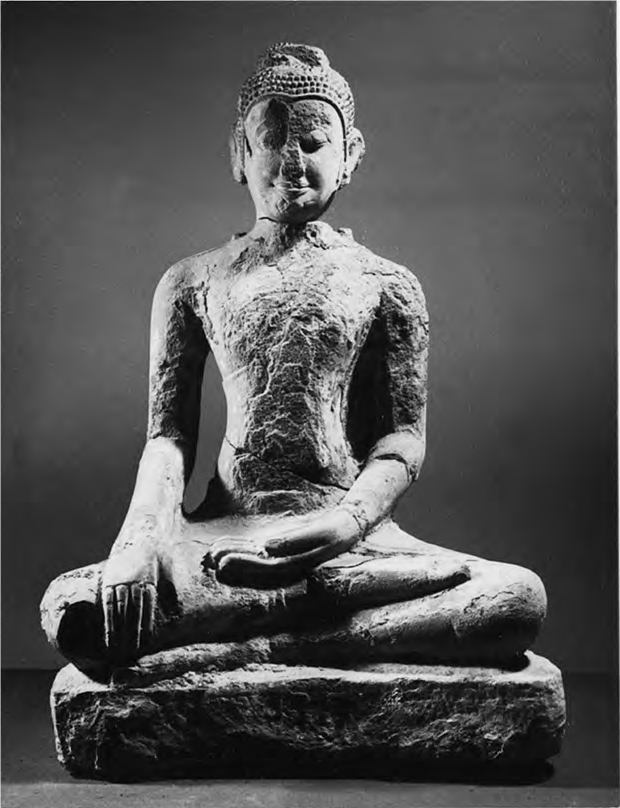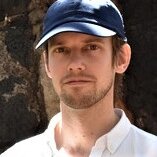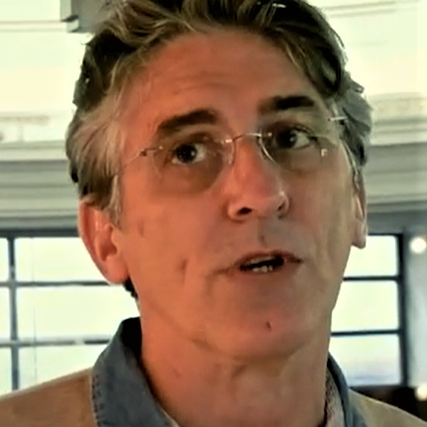One Buddha Can Hide Another
by Martin Polkinghorne & Christophe Pottier & Christian Fischer
Centered on the Bayon, a diachronic reinterpretation of historical assumptions about the reign of Jayavarman VII, and Angkor during the 16th century

- Publication
- Journal Asiatique 301:2, pp 575-624 | DOI 10.2143/JA.301.2.3001711
- Published
- January 2013
- Authors
- Martin Polkinghorne, Christophe Pottier & Christian Fischer
- Pages
- 50
- Language
- English
pdf 516.2 KB
This stimulating study starts with the 1933 discovery of the Bayon central statue by Georges Trouvé, challenging traditional assumptions about Buddhist and Shivaist confrontations through the centuries, iconoclasm in Angkor, and other important topics in Angkorean historiography.
About image destructions: ‘The first phase of the iconoclasm, the immense destruction of images of the Buddha on numerous Jayavarman VII monuments is notionally attributed to Jayavarman VIII.However, Jayavarman VIII cast as the iconoclast is supported only by hypothesis. The principal issue is the paucity and nature of inscriptions that deal with Jayavarman VIII and his reputed Brahmanistic fervour. The 1295CE inscription of Mangalartha (K.567) presents Jayavarman VIII as a patron of Brahmanism, yet according to Vickery (2006: 119 – 125) this is consistent with his successors Srindravaman (1295CE-1307CE) and Srindrajayavarman (1307CE-1327CE) who sponsored the foundations of high-ranking Brahmanist officials whilst affirming their preference for Buddhism in other inscriptions. An alternative candidate is Jayavarman Paramesvara who, in the first year of his reign, 1327CE, erected a Sivalinga in the Bayon. [Some authors have] have suggested that the reaction was not religious, but political and was focussed upon the deified representations of officials and dignitaries.’
About the so-called ‘re-occupation’ of Angkor in the 16th century: ‘Angkor was [then] alive with activity. Inscriptions, restoration works and new constructions confirm the increased attention for the site from Khmer royalty, religious officials, laity and foreign pilgrims. Not left to the jungle, the 16th century chisel marks that characterise the Bayon Buddha pedestal demonstrate a key role for this image and the Bayon during this period. This is not surprising considering the nearby activity at the Baphuon and likely worship at uposathagara (Buddhist terraces) throughout Angkor Thom.’
The 5‑m high ‘Bayon Buddha’, exhumed by archaelogist Georges Trouvé, was installed in a pavilion east of Angkor Thom, inagurated on May 17, 1935, by H.M. King Monivong, during a ceremony involving dances, religious rituals and mass gathering. It was the first time an example of Angkorian statuary was officially given back to popular worship. Exactly two months later, on July 17, Trouvé was found dead in his Siem Reap house.
Photo: Ayutthayan Buddha statue found in the central shaft of the Bayon (EFEO Cambodia)
Tags: Bayon, statuary, iconoclasm, historiography, Ayutthaya, 16th century, Jayavarman VII, Jayavarman VIII
About the Authors

Martin Polkinghorne
Martin Polkinghorne is a Senior Lecturer in Archaeology at Flinders University, Australia. Between 2011 and 2014, he led the Australian Research Council (ARC) Discovery project on pre-modern craft economies in Cambodia. This initiative discovered the first historic bronze foundry known in Southeast Asia and continues to excavate at Angkor.
Martin is a Chief Investigator of the ARC-funded Greater Angkor Project’s Urbanism after Angkor (14th — 18th century CE): re-defining collapse. In a complementary research program, Martin led the ARC Discovery Early Career Researcher Award (DECRA) project New Light on Cambodia’s Dark Age: The capitals of Cambodia after Angkor (1350 – 1750). Together these projects are conducting the first archaeological investigations of Cambodia’s Early Modern Period capitals on the banks of the Mekong and Tonle Sap arterial rivers.
Research of Cambodia during a time of quickening international trade reveals critical linkages between the celebrated Angkorian past and the present-day.
Martin Polkinghorne is Director of the University of Sydney Angkor Research Facility in Siem Reap, an Honorary Research Fellow of the Asian Studies Program, The University of Sydney, and a Member of the Advisory Board of Friends of Khmer Culture.

Christophe Pottier
Christophe Pottier (1966, Mayenne, France) is an archeologist and architect who worked with EFEO mission to Angkor from 1992 till 1999. Previously, he was involved in the restoration of the Khmer temple of Phanom Wan in Thailand, and the indexation of the Angkor related documentation preserved in the EFEO archives in Paris, under the direction of Bruno Dagens.
Assisting the Conservation of Angkor, Christophe Pottier took part in the restoration of the Terrace of The Leprous King (Angkor Thom), a vast effort left unfinished in 1973 when the Khmer Rouges stopped all conservation activities in Angkor. Later on, he Christophe Pottier directed the restoration of the northern staircase at the Terrace of the Elephants, completed in March 1999.
Head of the EFEO Siem Reap center at the start of the 2000s, he contributed to the identification of several hundreds new sites in the area of Angkor, which allowed him to reconsider settlements patterns and densities and to reassess ancient spatial layouts and organisations, which underline and specify the concept of territory in the Angkorian “cities”. This research continues since in the northern area of Angkor.
In addition, Christophe Pottier has headed since 1999 the Cambodian-French Archaeological Mission on the Angkor Region. He is associated since 2000 with the Greater Angkor Project led by Prof. Roland Fletcher, focusing on the spatial and chronological understanding of the decline and fall of Angkor as a center of power. Also, with R.K. Chhem (Western Ontario Univeristy) and A. Kolata (Chicago University), he initiated in 2005 a new Angkor Medieval Hospitals Archaeological Project.
Christian Fischer
Christian Fischer is Professor in Residence at Cotsen Institute of Archaeology, University of California, Los Angeles.
In 2016, he contributed to the Two Buddhist Towers Project (TBT) at Preah Khan of Kompong Svay.


